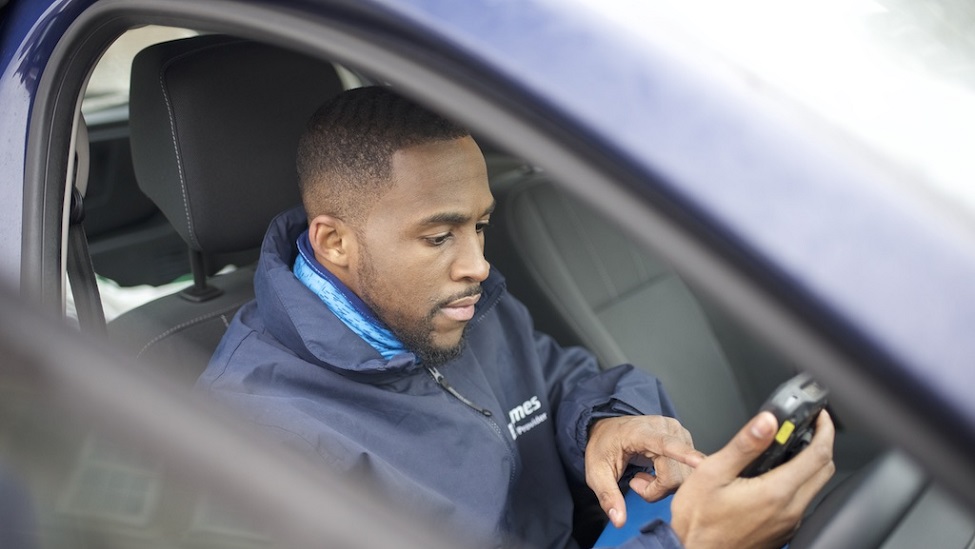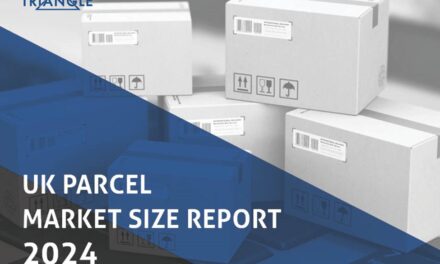
Hermes: becoming more agile and more effective

 Carl Lyon, COO at Hermes UK speaks to Post&Parcel about the pandemic and the dramatic effect on last mile delivery
Carl Lyon, COO at Hermes UK speaks to Post&Parcel about the pandemic and the dramatic effect on last mile delivery
Can you describe the levels of demand for last mile delivery over the last 12 months?
CL: At Hermes we have seen a huge increase in demand over the last year and o ur retailers have been under severe pressure. What’s been unique with the pandemic is that demand went up and down to start with then plateaued at a higher level.
How has Hermes responded?
We are focused on being flexible and making sure we put the right things in place to support our retailers and customers as rapidly as possible.
We brought forward our five-year plan and were able to deliver that in five months in 2020. We implemented two sorting hubs, delivered five new depots and increased our self-employed couriers by 10,500.
It was a challenging time but looking back we learnt a lot. We have used this learning to make sure we can respond to any peaks or troughs which arise within final mile delivery.
What type of volumes were you seeing when it came to the traditional peak season 2020 (Black Friday – run up to Christmas)?
CL: Obviously the peak of 2020 was a humongous peak in comparison to previous years. On our busiest day we delivered something in the region of 3.4-3.6 million parcels compared to the year before where we delivered around 2 – 2.2 million. It was an extremely big increase but there were lots of different factors involved. Lockdowns were coming in and out, demand was changing across the year and retailers clearly wanted to make sure they responded to the challenges. Luckily, we were in the best position possible to deal with those volumes as we had developed our processes so well throughout the year and implemented lots of new technology,
How did you manage the new COVID-19 health and safety requirements?
CL: One of the key things we learnt during the pandemic was the importance of thoroughly understanding the new health and safety requirements and adapting them into the daily operations of our business. We had to roll new policies out fast and deploy safety practices, not just for our colleagues internally at Hermes, but also for our customers and retailers.
One of the first things we did was implement a new delivery method which removed the need for any sort of social contact. All our communications with customers highlighted how we were safeguarding social distancing when delivering their parcels and at the same time we were regularly looking at our policies and our processes within depots. We assessed the times people were moving in and out of our hubs, implemented social distancing and rolled out training for our staff and health and safety teams throughout the business.
What technologies have you employed to enable these initiatives?
CL: We fast tracked the ability to deliver new methods of handing parcels to customers. We implemented new communication channels and technology which allowed us to divert parcels from one location to another. We linked more customers to our delivery app, allowing them to send us pictures of their safe place so they can inform the courier where to deliver the parcel rather than us finding that safe place.
How did new technology help you to recruit and train new couriers?
CL: Last year we rolled out our Last Mile Delivery app,using Cognito iQ’s new Mobile deployment technology application. This allowed us to quickly enrol and train new couriers on their own smartphones, which meant we didn’t need to rely on rugged devices being available, potentially causing on-boarding delays. In the past we would need the kit in the courier’s hands before we could train them on the technology but we changed our recruitment process to online and as part of that that we gave new recruits the ability to download the app and learn directly.
Was it successful?
CL: Yes! With the new technology our training methods became more agile and more effective. It was one of those moments when we were able to turn a negative (the pandemic) into a real positive. We were able to use the pandemic as an opportunity to innovate and we are now able to use technology to plan and overcome challenges ahead.
Have you seen a shift in customer demands in regard to delivery options during the pandemic?
CL: We have seen a big shift from the high street to home delivery during lockdown but we need to make sure we keep listening to the customers and developing our products and services to satisfy the flexibility the customers wants. So whether the customer want parcels delivered to their home, a safe place, out of home delivery to a shop or locker. We have always offered delivery options but we have had to develop the options at pace to keep up with the customer’s changing needs. Our aim is to make sure that customers are aware of all the options so that when people return to normality, they understand what we can offer and choose the option to fit their lifestyles.
How did you work with retailers to meet demand?
CL: We have always maintained good communication with our retailers and really tried to understand, retailer by retailer, what the sales programme looks like throughout the year. We would go and have specific peak meetings so we understood what the trends could look like as we approached peak. Also we would discuss not only the couple of weeks after Black Friday/ Cyber Monday but also the time at the end of peak, when the returns start coming in.
What processes do you have in place to help you manage changes in demand?
CL: We have strong planning in place and we are constantly assessing how people are training and checking in with them to see everything is ok. We have a number of data points we check every day to make sure we can spot when volume is not moving to us fast enough so we can adjust our collections and be really agile in that key period.
The other thing to mention when we look at our peak period is we ensure there is a degree of flexibility along the operational supply chain and that could be infrastructure or technology. The reason for this is that no one can really predict when our peak will land. We have a good idea, we know roughly and we have historical data but certainly last year with COVID-19 and lockdown beginning a couple of weeks before Black Friday what was important was that we had the scalability to react fast. We were constantly looking at the plan and had the routines to respond.
What advice would you give to other Last Mile Delivery (LMD) providers on how to deal with Peak Plus?
CL: I think preparation is the key. You have to make sure you are engaging in scenario planning as early as possible. You need to look at your network and understand its capabilities and make sure you are looking for a number of options to scale up and down in areas which you know may become a bottleneck.
Another thing is engaging with your teams. It’s one thing to have a planning team working through numbers but ultimately you need that to get down to the coalface – to the people who are actually doing the work. You need to work with people on the ground and specifically go through what the volumes at peak look like and manage that detail. Last mile delivery is a details business and the faster you get to that point when you can really plan ahead and have a number of scenarios you have solutions for, the better.
How has Hermes maintained customer satisfaction during this period of increased delivery volumes?
CL: Our key priority at Hermes is investing in our technology and products and ultimately our customer experience. We want to do that in a sustainable way and that is important to our customers now and will also be in the future. When it comes down to customer experience it is about reliability and making sure our communications are strong. Technology is very important in that respect as we communicate with our customers through our tracking performance, through pictures of where the parcel has been delivered, our ETAs and the time frame when the parcel delivered. Hermes has always developed a flexible 7 days a week delivery approach either to home, to shops, safe place, and now customers are able to divert the parcel to give the customers the ultimate choice when and where their parcel gets delivered. For me it is very important that we continue that drive to listen to the customers, to develop our technology and our customer experience based on what customers want and ultimately deliver that promise 100 times out of 100.
Which elements of the LMD process do you believe have the most potential to reduce the cost to deliver?
CL: From my perspective it is about making sure we are being as efficient as we can be. It’s about ensuring couriers have the best information, so developing our courier app to give couriers the opportunity to route properly and in the quickest time is very much part of this.
The Myplaces feature of our app helps reduce time wasted on addressing problems and it not only suggests the quickest route but helps with the timing too.
What do you predict will happen to the level of demand for LMD?
CL: I think that demand will continue to grow. The innovation shown by both retailers and carriers has started to give customers the confidence that we can meet the demands of a growing customer base. The key thing is that we continue to develop at the same pace that we have done the last 1 – 2 years – giving customers the options, flexibility and technology to interact with us and of course ensuring we provide a reliable service at the right cost.
What do you see as being the top priority for your customers?
CL: As we move from lockdown, and life returns to normal more customers are likely to want deliveries instead of going back to the high street but they may want the choice of when and where to receive that parcel. While home delivery may have suited them during lockdown a shop delivery may be more convenient when they return to work.
Out of home is something we envisage will grow and the ability to link the two networks is a priority of us. It’s about giving the power to the customers to be able to select when/where what time that parcel is delivered is key to really continuing that experience and growth in final mile.
How is the Cognito iQ Mobile App currently used within your business? What are the benefits?
CL: We have seen a lot of enhancements to our operations via the Cognito iQ Mobile app. Not only has it helped us to scale up and down fast operationally, but it has changed the way we interact with the customers – giving them options on two-way communication. Previously we had split platforms across our operations but being able to have one platform across our operations allows us to link up products across networks and really streamlines our performance. The app also allows us to work with Cognito iQ to look at ideas and see how we can develop products and services for our customers.
Has working with Cognito iQ contributed to changing the LMD experience for both staff and customers?
CL: We have worked really closely with Cognito iQ and know each other’s businesses very well now. This partnership has helped us come up with new solutions, develop at pace and ensured we delivered a number of initiatives throughout the year. It has also helped our agenda to improve customer experience as we can now give our couriers the best tools possible to be as efficient as possible and we are confident we can develop products to suit customer needs now and in the future.
To access more information and video snippets from this interview with Carl Lyon of Hermes UK, click here










